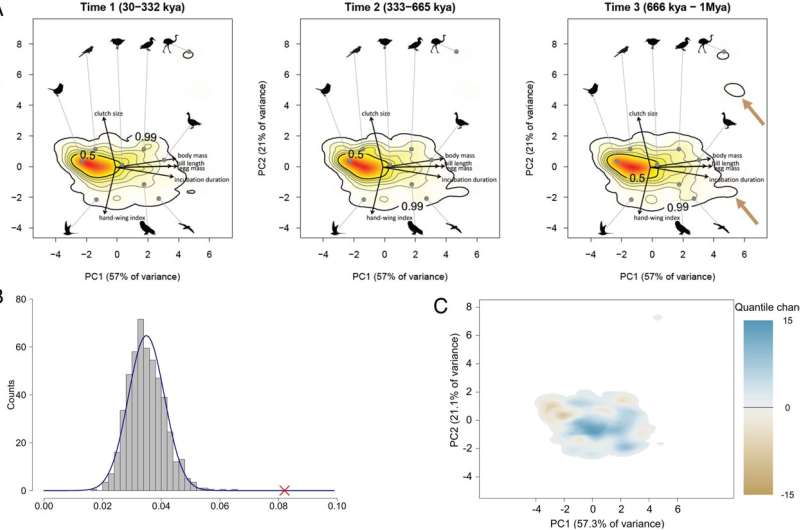Diversity in bird traits has remained relatively stable over the past million years

A new study in the journal Proceedings of the National Academy of Sciences uses genetic data from more than 250 bird species to investigate patterns of trait diversity over the distant past and under a previous period of dramatic global climate warming.
Ryan Germain and professor David Nogués Bravo of the Center for Macroecology, Evolution and Climate at the University of Copenhagen and colleagues identify the combination of morphological, ecological, and reproductive traits associated with long-term population declines. They also identify the trait-sets most associated with sensitivity to warming climate conditions.
Stopping the decline of global biodiversity is one of society’s most pressing challenges, but we often have a limited understanding of which species are likely to be most sensitive to population declines under environmental pressures such as climate change.
One reason for this knowledge gap is that many studies investigating such declines are conducted over a few years or decades, and often in a single geographic area. While informative for climate responses over shorter time scales, we still lack insight into biodiversity responses over longer periods and before the widespread effects of humans on the planet.
Using data collected as part of an international effort to sequence the genomes of all of the world’s birds, this study constructed genetic “log books” of changes in population size for 263 species over the past million years.
Combining this information with trait data (such as body size, migration strategy, and reproductive rate) meticulously collected from thousands of wild birds and museum specimens, this study identified the trait combinations representing species that have undergone the largest population expansions and declines over this period of the Earth’s history. This work took place as part of project DEMOCHANGE.
Results from the study indicate that species with lower ability to disperse and/or migrate have declined substantially over the past million years and are less abundant during more recent periods than they were in the more distant past.
Species most sensitive to population increases or decreases during a period of intense climate warming about 150,000–120,000 years ago had very similar trait combinations, suggesting that such “redundant” trait sets might help maintain the stability of ecosystems under such periods of intense environmental change.
“These types of data offer us an amazing peek into the histories of different bird species, particularly during periods of drastic global environmental change,” says Germain, lead author of the study.
“By combining these estimates of past population sizes that we get from bird DNA with the massive effort of assembling trait data for each species, we can start to understand what types of species groups are most sensitive to the effects that we’re having on the planet.”
More information:
Ryan R. Germain et al, Changes in the functional diversity of modern bird species over the last million years, Proceedings of the National Academy of Sciences (2023). DOI: 10.1073/pnas.2201945119
Citation:
Diversity in bird traits has remained relatively stable over the past million years (2023, February 8)
retrieved 8 February 2023
from https://phys.org/news/2023-02-diversity-bird-traits-stable-million.html
This document is subject to copyright. Apart from any fair dealing for the purpose of private study or research, no
part may be reproduced without the written permission. The content is provided for information purposes only.
For all the latest Science News Click Here
For the latest news and updates, follow us on Google News.

